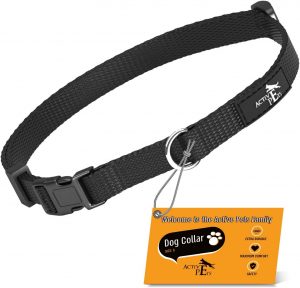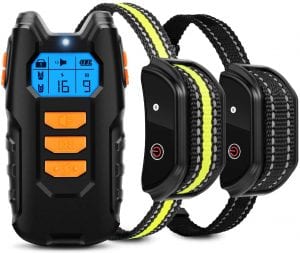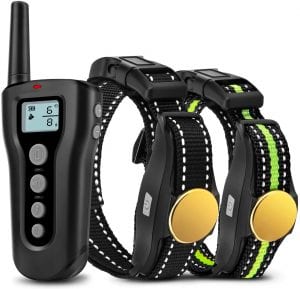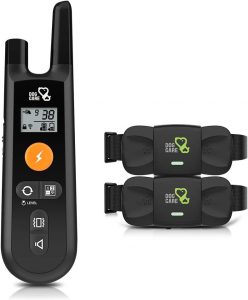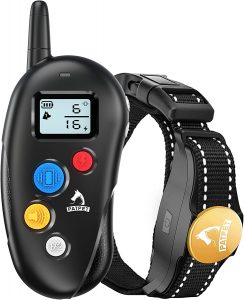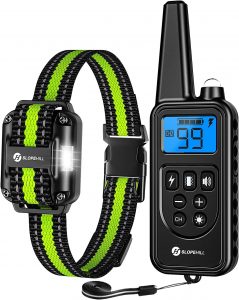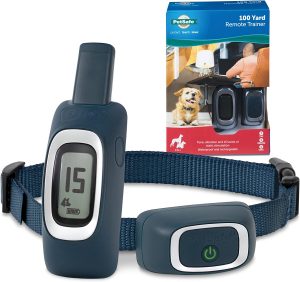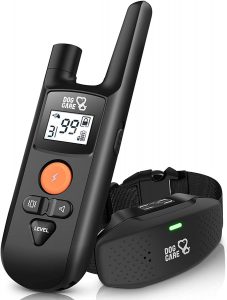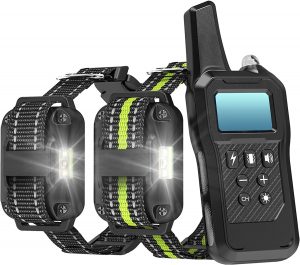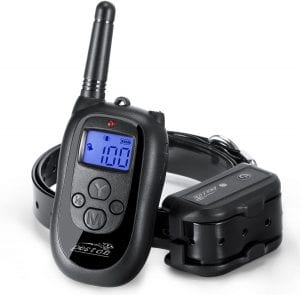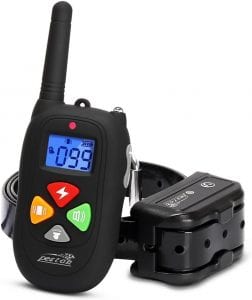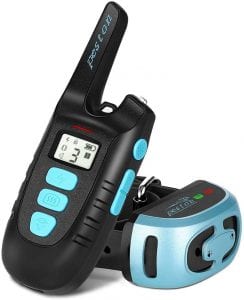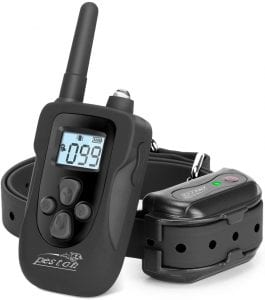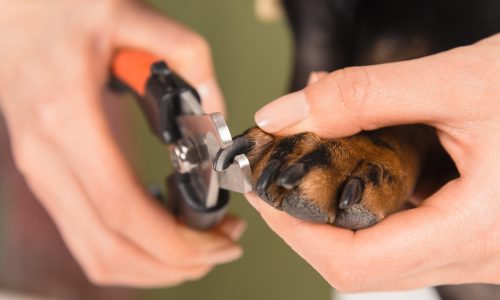The Best Dog Training Collars
We looked at the top 13 Dog Training Collars and dug through the reviews from 62 of the most popular review sites including and more. The result is a ranking of the best Dog Training Collars.

Our Review Process
Don't Waste Your Money is focused on helping you make the best purchasing decision. Our team of experts spends hundreds of hours analyzing, testing, and researching products so you don't have to. Learn more.
Our Picks For The Top Dog Training Collars
- 1. Active Pets Anti-Rust Adjustable Dog Training Collar
- 2. Flittor LCD Screen Dog Training Collars, 2-Pack
- 3. Bousnic Nylon Dog Training Collar, 2-Pack
- 4. DOG CARE TC01 Security Lock Dog Training Shock Collar
- 5. PATPET Adjustable Vibrating Dog Training Collar
- 6. Slopehill 3-Mode Dog Training Shock Collar
- 7. PetSafe Lightweight Remote Dog Training Collar
- 8. Dog Care TC05 Auto Off Shock Dog Training Collar
- 9. FunniPets Built-In LED Light Dog Training Collars, 2-Pack
- 10. PESTON Rechargable & Waterproof Remote Dog Training Collar
- 11. PESTON P12 Remote & Rechargeable Dog Training Collar, Small & Medium Dogs
- 12. PESTON PS3 Long Range Waterproof & Rechargable Dog Training Collar, Small & Medium Dogs
- 13. PESTON P11 Dog Training Collar, Small To Large Dogs
Available in black, blue, orange or pink, this dog training collar is both stylish and functional. The material is breathable, while also being strong and durable. There's an adjustment buckle for a custom fit and a quick release button that makes the collar a cinch to operate.
Easy to UseAlthough this dog training collar has a small width of 3/8 inch, you can also get it in medium and large sizes.
You'll find an easy-to-read LCD screen on this dog training collar remote. It keeps you apprised of your current settings and lets you know when the battery is in need of charging. The unit is also completely waterproof, which means you can use it at the beach or around the family pool.
Most AffordableNot only is this dog training collar budget-friendly, but it also comes with a second collar for homes with two pups.
Each of these dog training collar sets comes with one remote and two collars. The unit works at long distances of up to 1,000 feet, which gives your pup more room to roam around. Thanks to the ergonomic design of the remote, it's comfortable to hold and operate during the training process.
Long RangeThis dog training collar is designed for use by dogs weighing between 15 and 120 pounds.
If you have multiple pets in your home, you'll want to opt for this dog training collar. The included remote comes with enough channels to teach up to nine dogs at once. The shock level ranges from 0 to 99, so you can easily adjust it to match the size of your furry friend.
Safety Features IncludedThanks to the security keypad lock, you won't have to worry about any accidental shocks with this dog training collar.
Buying Guide
No matter whether you adopt an older rescue pup from the local shelter or bring home a brand new puppy, every new four-legged friend will need some training. Depending on the breed, training may be a breeze or an uphill battle. And, that training may take years.
Some dogs are notoriously stubborn and even the tastiest of treats won’t be enough to convince them to follow basic commands. Sit, down, stay and come aren’t just cute tricks. They are vital to your dog’s well-being and your own sanity. Training and nurturing an obedient dog can help keep your dog healthy and safe throughout its life.
When all else fails in training and dogs simply won’t listen, exasperated owners will turn to a training collar, also known as e-collars or collar-mounted electronic training aids. The collar attaches around the dog’s neck like a regular collar. It has two prongs that emit the vibration and shock directly into the dog’s sensitive neck. The owner can control the level of vibration and timing via a remote.
Electronic training is polarizing. It can be a very divisive topic within the dog community. While proponents swear by its efficacy, others can’t stand it. They consider the shocks to be cruel and abusive.
At its most basic, a training collar is a mode of operant conditioning. This is a fancy psychology term for a learning process. It relies on rewards and punishments to teach a new skill and eliminate unwanted behaviors. When done properly, the trainee, in this case your dog, makes an association between a particular behavior and a consequence, the collar’s jolt.
Training collars do emit a noticeable jolt, which is what many opponents take issue with. They worry that the jolt is painful and causes undue anxiety in the dog that could be counterproductive to any training.
However, the training collars on the market now have a wide range of settings. They begin at barely perceptible vibrations and escalate in incremental bits to higher and higher voltages. You can place the collar on your own wrist to feel the sensation for yourself before placing it on your dog if you’re concerned. Plus, you’re able to fine-tune to the perfect level to grab their attention. Then, they stop the unwanted behavior and tune in to you and your command.
There are several important factors to consider when selecting a shock collar for your dog. First, you want to ensure it will fit properly around your dog’s neck. Most models have adjustable straps that can fit a range of sizes. They will include measurements so you’ll know if a specific collar will work for your dog.
Training collars also have a range of settings. Most have three distinct settings: sound, vibration and shock. You can slowly escalate from sound through vibration levels and shock as needed to get your dog’s attention.
How much the unit on the collar weighs also matters. For smaller dogs, the units can be bulky, weigh your dog down and even impede their movement. If they’re uncomfortable to start off, they won’t be as willing as trainees.
Still, other more advanced models allow for customized settings and multiple modes. This allows you as the dog owner to essentially switch between two different collars with one remote control. You can also be confident that the shock level is set properly for each pooch.
All the shock collars run on batteries, so you’ll want a model with decent battery life. The last thing you need is a runaway pup and no juice left to alert them back to reality.
The biggest benefit of training collars is their value. Compared to the cost of a professional trainer or behaviorist, a shock collar is a budget buy with a big return.
Why we recommend these dog training collars?
Products Considered
Products Analyzed
Expert Reviews Included
User Opinions Analyzed
Our experts reviewed the top 13 Dog Training Collars and also dug through the reviews from 62 of the most popular review sites including and more. The result is a ranking of the best of the best Dog Training Collars.
DWYM is your trusted roduct review source. Our team reviews thousands of product reviews from the trusted top experts and combines them into one easy-to-understand score. Learn more.
What to Look For
- Pay attention to the size of the collars. Most can be trimmed or adjusted to custom fit your dog’s neck within a certain measurement range.
- Consider how many dogs you will want to train simultaneously. Some transmitters can control multiple shock collars on up to three dogs.
- While you can test the jolt level on yourself, do not place them around your neck and shock yourself or your friends. This is dangerous.
- When you first start using a shock collar, you want to begin at low levels of vibration and stimulation and work your way up to learn the best setting for alerting and training your dog without causing anxiety or discomfort.
- Read directions and warnings carefully, because the shock collars do have powerful shock settings at the higher levels and using them incorrectly can be counterproductive in training and changing your dog’s behavior.
This review has been updated by DWYM staff.
More to Explore
The shock collar training method dates back to the late 1960s. They were first utilized to train hunting dogs.
Since then, they’ve been embraced for a wide variety of dog breeds and general training. They are a common part of modern obedience training. Shock collars also help with training service dogs, including animals in police departments or the military.
The high-end collars come with advanced safety features built-in. Some have GPS to help owners track down a pet. Others include lights and sounds, which are especially useful for hunters keeping track of their dogs.
In spite of research and a growing history of efficacy, shock collars remain a polarizing training method in the dog community.

